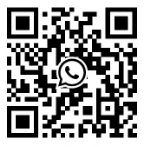- Tel: +86-18106909650
- Email: ab@mooreplc.com
In modern industrial safety and process control systems, the requirements for accurate and reliable gas
concentration and flammable/hazardous gas monitoring are becoming increasingly stringent. As a core
module in Honeywell System 57, the 05701-A-0302 Single Channel Control Card (Catalytic) performs key
functions such as sensor signal conversion, alarm detection, and output control.
l Specification Highlights
Display: Four-segment LCD / Display Area: 25-segment analog display + four-character numeric
+ four-character message display + icon (power/card selection)
LED Indication: Displays A1/A2/A3 alarms, Fault/Inhibit status
Keys/Controls: Alarm Reset and Card Select buttons
Resolution/Alarm Settings: Alarm setpoints adjustable in 1% FSD steps
Electronic Drift: ≤ ±2% (6 months)
l Functions and Typical Applications
Main Functions
Signal Processing: Receives signals from catalytic sensors (or other modules) and performs filtering and linearization.
Alarm Detection: Determines A1/A2/A3 alarm states based on set thresholds and activates the corresponding outputs.
Display/Communication: Displays current concentration, alarm status, and system messages on the front panel;
interacts with the engineering card and host system.
Remote Control: Supports remote reset and inhibit of input signals.
Module Expansion: Can be combined with relays, interface cards, analog output modules, and other modules
to expand output capabilities.
Typical Application Scenarios
Industrial Plant Combustible Gas Monitoring System — Monitors and alarms for combustible gases such as hydrogen, methane, and coal gas.
Petrochemical/Chemical Process Control — Detects gas leaks in reactors, pipelines, and storage tanks.
Mining/Energy Facility Safety System — Serves as a safety monitoring core in mines, natural gas stations, and fueling stations.
Environmental Protection/Gas Leak Alarm — Monitors volatile combustible gas concentrations in boiler rooms, laboratories, and storage areas.
l Future Trends and Development Directions
In the fields of industrial automation and safety monitoring, traditional modules such as control cards are also facing new technological challenges
and transformations.
Digitalization and Networking
In the future, control cards may increasingly adopt digital bus communication (such as Modbus, EtherNet/IP, PROFINET, etc.), replacing analog outputs/relay
outputs, to facilitate integration with modern DCS/PLC/IIoT platforms.
Intelligent Algorithms/Adaptive Control
Utilize AI/machine learning algorithms to adaptively compensate for sensor signal
drift, provide fault warnings, and predict trends.
Cloud-Based Remote Monitoring and Diagnosis
Control cards connect to cloud platforms for remote status monitoring,
fault alarms, and firmware upgrades.
Module Miniaturization/Integration
Integrate more functions (sensor driver, signal processing, alarm logic) into
smaller modules, reducing space and cabling.
Multi-Gas/Multi-Channel Fusion
Supports multiple gas types (catalytic, infrared, PID, etc.), as well as fused
control of multiple channels or modules.
Functional Safety/Certification Enhancements
With the increasing requirements of safety standards (such as SIL and IEC 61508/61511), control cards must
meet more stringent safety certification standards at both the hardware and software levels.
Honeywell's 05701-A-0302 single-channel control card, a core module in the System 57 safety/gas monitoring system, performs key functions such as signal
acquisition, alarm detection, control output, and interactive display. Although it has a long history and widespread popularity, its modular design, precise performance,
and compatibility remain advantages in the face of modern trends. In the future, with the development of networking and intelligent systems, control cards will inevitably evolve
towards digital communication, remote operation and maintenance, and safety authentication.
Leave A Message
Scan to Wechat :

Scan to WhatsApp :
